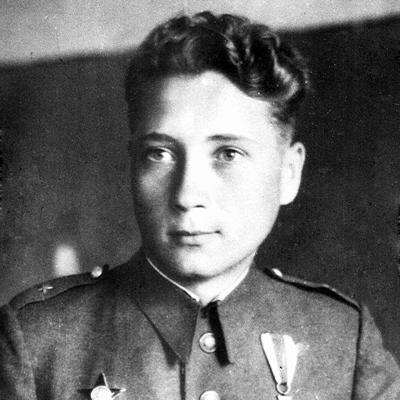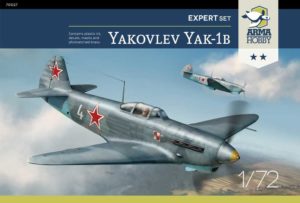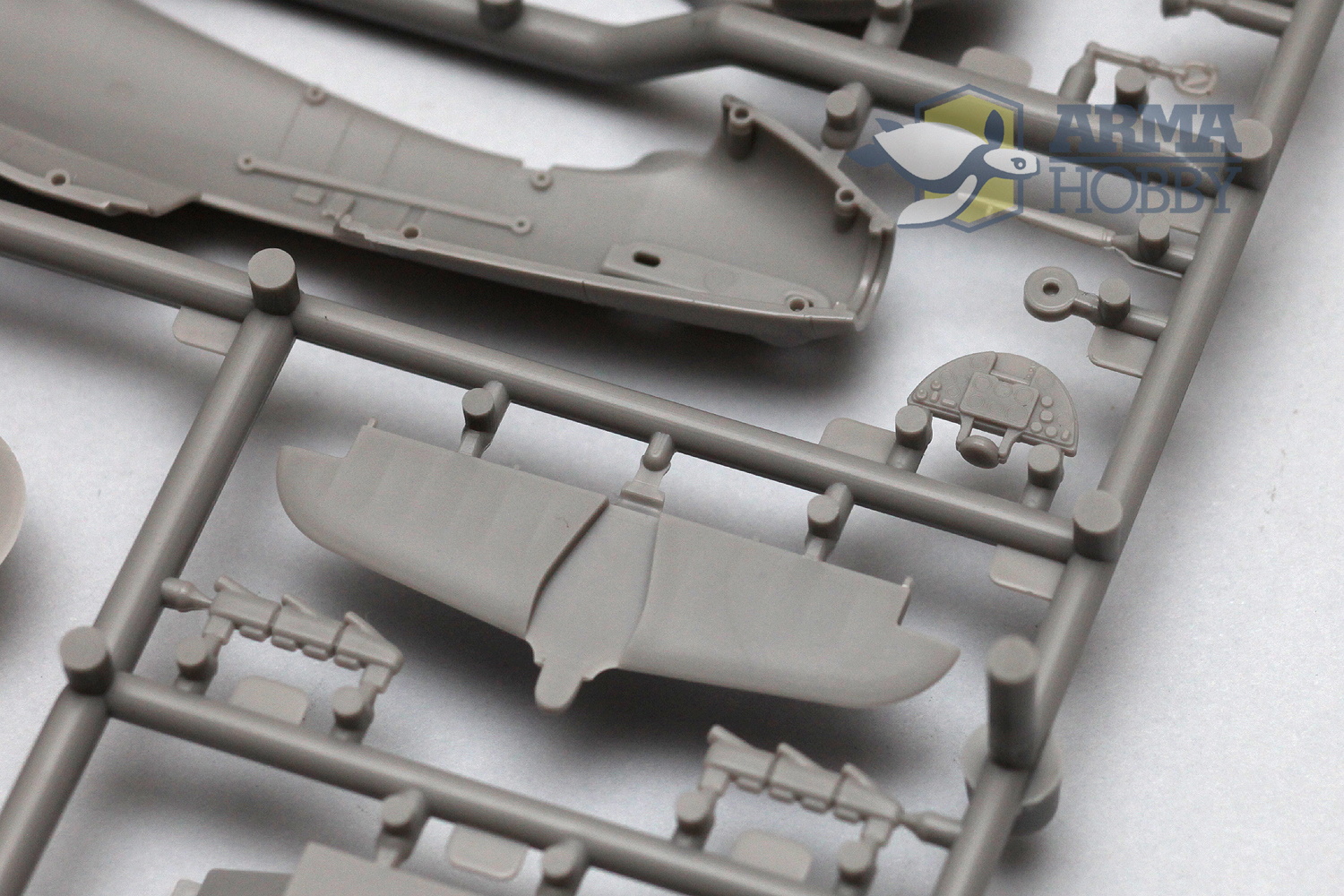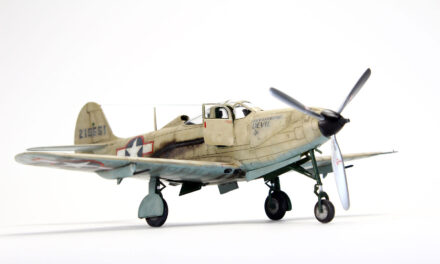I got the aircraft with „4” painted on the fuselage, serviced by Cpl Piotr Mandziuk. Since then my “Four”, the mechanic and myself created the smallest aviation unit. We were going to work together and share common effort on the frontline. However, pilot’s skills are worthless if his plane is not airworthy. And this depends on reliable, honest, hard and at the same time inefficient mechanic’s work
It is typical that pilot doesn’t complain on his plane. At most he tells his mechanic that the aircraft is not fast enough, turns with problems or does not react on rudder or elevators movements as it should. But he never tells it aloud. Officially his mount is the best in the flight, alas in the whole air regiment. Basing on this attitude my “4” was the best fighter.
I am sitting it the cockpit. I am confident about my “Four” and I’m sure she won’t let me down. Cpl. Mandziuk, my mechanic, is walking around. In the headphones I can hear clicking noises and orders. Finally there’s something for us:
- Kitayev’s group scramble
Assault planes are taking off first, carrying ammunition, bombs and rockets. We are following them. Fighters are falling in agilely. Take off! Engines roar! Clouds of dust! (…)
That is Edward Chromy’s description of his plane. He was one of the leading pilots of 1st Fighter Regiment “Warszawa” and the author of his memoirs “Szachownice nad Berlinem” . Thanks to this book both the author and his Yak-1B “4” became famous among enthusiasts of Polish wings.
In reality, the “Four” was not the only Chromy’s aircraft, and there were three other planes in the 1st Fighter Regiment which were wearing number “4” on their fuselages.
And this is the history of these fighters.
Jak-1b No 4, 1 eskadra (squadron) of the 1 Regiment piloted by chor. pil. Edward Chromy. In the background is the aeroplane No 13 from 2 eskadra. Artwork by Marcin Górecki.
Chromy’s “Four”
Yak-1b fighters that were delivered to 1st Fighter Aviation Regiment had individual numbers painted according to first two digits of serial number (or one digit if the first one was 0). This means that the planes with “4” painted on their fuselages had to have serial numbers starting with 04.
We do not know what was Chromy’s fighter serial number as there were three airplanes with serial numbers starting with such combination – 04165, 04173, 04174. But probably we can only consider 04173 and 04174.
Tactical numbers were painted on the fuselage in a factory with silver paint, between the red star and the rudder. The red star also had the thick silver outline and the rudder star had one more, thin, red outline. Polish Checkerboard was painted on the engine cowling. Each squadron had propeller spinner tip painted in different colour. As Chromy was assigned to the 1st squadron, his fighter had it, most probably, yellow.
Jak-1b, aeroplane flown by chorąży pilot (Warrant Officer) E. Chromy, 1944-45. Yellow spiner tip is the insignia of the 1 squadron from 1 Fighter Aviation Regiment (1 Pułk Lotnictwa Myślowskiego, 1 PLM). Polish isnsignia are painted both sides in the front of cockpit. Factory painted Soviet insignia with silver outline and silver tactical numer. Chromy has flown this aeroplane in the first combat mission of the Regiment on 23 August 1944 over Warka-Magnuszew bridgehead across Vistula river. Artwork by Zbyszek Malicki.
Chromy’s mount took part in 30 combat missions. Chromy flew it 24 times with single missions flown by Warrant Officer Andrzej Jaworski, 2nd Lt. Julij Kozak, W/O Leon Kempa, Cpt. Stanisław Lisiecki and W/O Władimir Suszek.
As it was mentioned above, Chromy flew his beloved “Four” only in some of his combat missions. In other 35 he sat in cockpits of Yak-1bs with the following tactictal numbers – 1, 2, 7, 9, 20, 32, 40 and 45. When his regiment received Yak-9 fighers he flew 15, 35, 93 and…4 – but that will be described further.
The only known photo of Chromy’s “4”. Photo from author’s collection.
The most spectacular success achieved on the Chromy’s “4” was destruction of a steam engine soon after the regiment entered combat. We can find the colourful description of this combat mission it Chromy’s memoirs but here we will only cite Col. Josif Smagi’s, OC 1st Air Division, official order:
POLISH ARMY 1st AIR DIVISION ORDER No 017
23th October 1944 Oerpating Army
Concern: Destruction of enemy’s steam engine by 2nd Lt. Kalinowski and W/O Chromy on the 24th September 1944
During the combat mission – fighter sweep in Warsaw area on the 29.09.1944 the group of Yak-1 fighters flown by 2nd Lt. Kalinowski, W/O Chromy and Cpt. Matvieiev discovered, between Wyczółki and Raków railway stations, a cargo train heading Warsaw . Lt. Kalinowski and W/O Chromy attacked the train destroying the engine and setting the train on fire. The action was witnessed by Cpt. Matvieiev.
HEREBY I COMMAND:
To pay Lt. Kalinowski and W/O Chromy due money for the destruction of the steam engine according to USSR People’s Commisar of Defence order No. 291 from 8.10.1943. The payment will be secured by 833 bol.
I want all pilots focus on destroying engines first while attacking trains.
Polish Army 1st Air Div. Commanding Officer
Col. Smaga

Warrant Officer Edward Chromy
Edward Chromy was born on the 4th October 1922 in Pińsk. He grew up in Polesie – a part of pre-war Poland which was consider very poor by the rest of the country. As a young boy he was interested in building models and mechanics and float planes of the River Flight operating in the Pyrpeć basin stimulated his imagination. He also belonged to the Scouts and Związek Strzelecki which enforced his patriotism.
He did not take part in September 1939 as he was only 17. After the September Campaign Pińsk fall under Soviet occupation and Chromy was arrested when the new authorities found a gun at his place. He was sent to a Gulag concentration camp in the Komi Republic for five years. Before he arrived at his place of imprisonment he had spent some time in prisons in Baranowicze, Orsza and Moscow.
In March 1942, under the agreement of Sikorski – Maiski treaty, he was released from the camp but despite his efforts he did not manage to reach Gen. Anders’s army. Being a free man, in theory at least, he was wondering across the USSR working hard. In May 1942 he joined Polish People’s Army in the Soviet Union. First he was assigned to the 1st Tank Regiment and then to the 1st Fighter Aviation Regiment “Warszawa” where he could finally fullfil his dreams about flying. During the training period he flew UT-2 and Yak-7 and during the campaign Yak-1b and Yak-9. He also became outstanding pilot in his unit. In January 1944 he was promoted Warrant Officer (the first officer rank in Polish People’s Army) and in August 1944 he flew his first combat mission. Until the end of the war he flew 59 missions over Warsaw, Pomerania and Brandenburg.
After the war he made fast and well deserved career in the army. In 1947 he became the commanding officer of the 2nd Fighter Regiment and in 1957 the 7th Air Division. He also studied at the Air Academy in Moscow and the General Staff Academy in Rembertów, Poland. He was also deputy at the Air Force Institute of Technology. In 1969 he became Officer Commanding of the 4th Air Base in Rembertów. In 1974 he retired from the army as Dipl. Col.
In the fifties, during the peak of Stalin’s terror, he was independent Member of Parliament.
For his gallantry during the war he received Virtuti Militari Golden Cross, Grunwald Cross 3rd Class, Cross of Valour, Order of Polonia Restituta Fourth Class (the Officer’s Cross), Gold Cross of Merit, Brown, Silver and Gold Medal of Merit for National Defence and Soviet Order of the Red Star.
He died on the 19th January 2003 at the age of 80. He was buried at the Powązki Military Cementary in Warsaw.
One in each squadron
Two other “Fours” served in the 2nd and 3rd Squadrons. According to the rules implemented in the 1st Fighter Aviation Regiment “Warszawa”, the plane from the 2nd squadron, probably, had its spinner tip painted white and the one from the 3rd squadron– blue.
The necessity of using the word “probably” is prosaic – as for today there have not been found any photos showing “Fours” clearly enough to be sure which aircraft it is. We can assume that the colour was the only visible feature that allows to distinguish these planes.
The “4” from the 2nd Squadron flew 24 missions. W/O Iosif Gostiuminski was the pilot who flew most missions (24). The rest were flown by W/O Ryszard Ber, 2nd Lts. Wsiewolod Bobrowski, Witold Gabis and W/Os Kazimierz Rutenberg and Władysław Żurawski. The fighter was used from the 1st September 1944 to the 18th February 1945, although not very intensively.
“Second Four”, aeroplane from 2 squadron (in the foreground aeroplane No 13). Photo from author’s collection.
The plane used in the 3rd Squadron was a personal mount of flight’s CO Mjr. Tadeusz Wicharkiewicz – the former (and future) CO of the 1st Fighter Aviation Regiment. Major Wicharkiewicz used this plane to fly all of his six combat missions: the first one on the 24th August 1944 and the last one a month later on the 24th September 1944 during the combat mission over Warsaw, when he was shot down by German Flak. Shortly after the war he described this event:
At 11 o’clock I took off as a leader with three other Yak-1 fighters from Zadybie-Stare aerodrome and headed towards Praga, which we reached within 15 minutes. We crossed the Wisła at 1500 metres. Suddenly I noticed flames on the left side of the engine cowling. At once I ordered “Hawks, Hawks, Hawks turn 180 degrees left” to the rest of pilots, turned left and headed directly towards Praga. While over Żoliborz – Bielany area, with flames becoming stronger in lower part of the cockpit, I had to open the canopy and stand on the seat. With part of the body outside the cockpit, I was steering the plane with my leg, I reached Praga. Then I kicked the stick and was ejected strongly over the engine cowling and my aircraft crashed in the river. At first I couldn’t open the parachute as the aerial mast, located just aft the canopy, hit me and I started cartwheeling. I did it after 500-600 metres. When the parachute opened I looked down and saw a narrow river and I was close to one of the river banks. Because of cartwheeleing I lost my bearings and I couldn’t say where I was as I found myself inside of cumulus. Horizontally I saw nothing, I could only see the river below and some buildings on both sides. I also forgot that there was easterly wind. Suddenly I found myself over the middle of the river and I was slowly heading towards opposite bank. When close to the bank I left the cloud and completely new horizon opened to my eyes and I understood that I was descending towards left, occupied, bank of the Wisła river. When I was closer to the ground Germans who were shooting at me stopped doing it and in the air there were three Yaks circling. Below I saw a group of 15-20 people running and I shouted “Poles!” yet with no response. I landed among the group of those people, around 300 metres from the river. Unfortunately the landing was quite hard as the day before we left for the frontline I injured my knee and twisted a leg. When I hit the ground my wallet fall off the left pocket. It was picked up by one of Germans. Another one took my gun. When I asked them who they were they replied in Polish “you are German war prisoner”. My wallet contained officer’s ID, the list of pilots on the mission and a dispatch for Information Officer. One of them told me to wait for a car that would take me to a camp. While waiting I was very stressed and I was smoking one cigarette after another.
That way the “Four” of the 3rd Squadron finished its career. Who knows, maybe the remnants are still there, buried underground.
But it was not the last mission of the pilot from the squadron on Yak-1b No. 4. On the 18th April 1945 W/O Juliusz Szwarc flew one mission on the plane borrowed from the 1st or 2nd Flight.
Pilots of two “fours”. Left W/O Josif Gostiuminski from 2 squadron, to the right mjr. Tadeusz Wicherkiewicz pilot of the aeroplane from 3 squadron. Photos from author’s collection.
The fourth “Four”
In 1945 another “Four” appeared in the 1st Fighter Air Regiment. It was Yak-9D s/n 4115304. In case of Yak-9s in the Regiment tactical number mirrored two last two digits of the serial number and it was painted between the star and the cockpit.
It was used for a very short time but quite intensive – during eight-day service it flew 23 missions. The first one took place on the 16th April 1945 and the pilot was CO’s deputy Mjr. Nikolay Buyevitch. Later it was reguraly flown by Lt. Anatolij Szorokun from the 3rd squadron. Single missions were flown by W/Os Chromy, Czesław Bogusiewicz, Sergiej Danowski, Mieczysław Podgórski and Władysław Żurawski.
On the 19th April 1945 Szorokun claimed a Focke Wulf over Brandenburg, Unfortunately, just four days later, he crashed the plane, which had been damaged by German flak, on his unit’s own aerodrome in Barnówek.
English translation by Dominik Sędziak
You may be interested:
Articles and photos on 1 Fighter Aviation Regiment (1PLM) and other units on www.polishairforce.pl (Polish language)
 Jak-1b Expert Set plastic kit with chor. pil. E. Chromy markings in Arma Hobby shop
Jak-1b Expert Set plastic kit with chor. pil. E. Chromy markings in Arma Hobby shop
- Decals with multiple markings options
- Photoetched parts
- Canopy and wheel masks
Wojciech Zmyślony, electronics engineer, enthusiast and researcher of the history of the Polish Air Force, especially of the 1st Fighter Aviation Regiment "City of Warsaw" and the 318th Fighter-Reconnaissance Squadron "City of Gdańsk". The founder of www.polishairforce.pl, the author and co-author of more than 100 articles and several books.
This post is also available in:
 polski
polski












